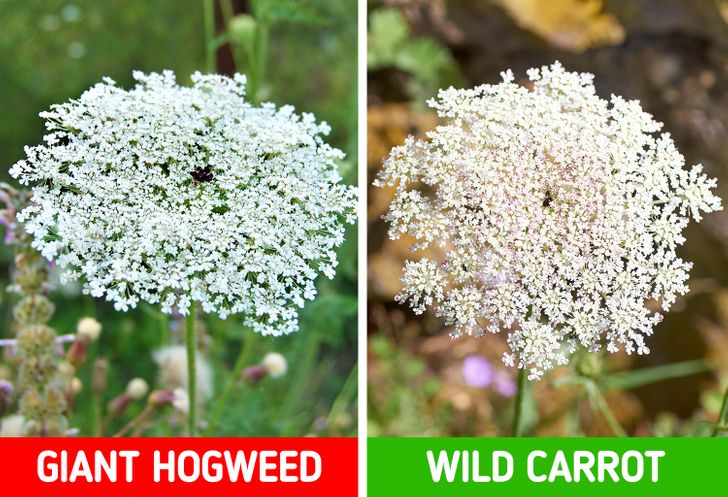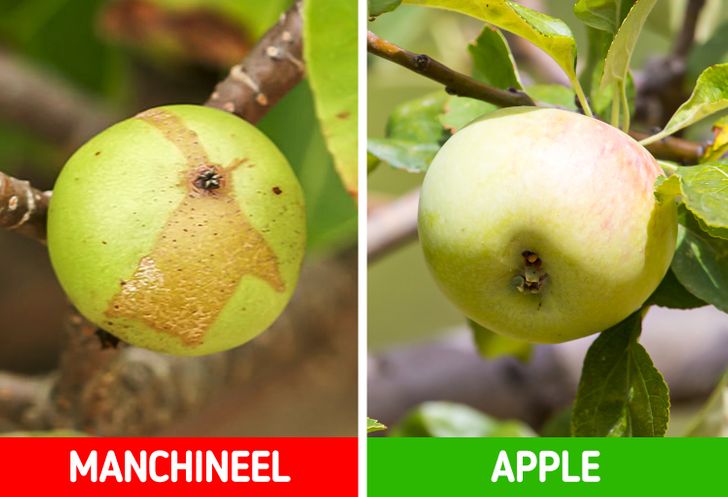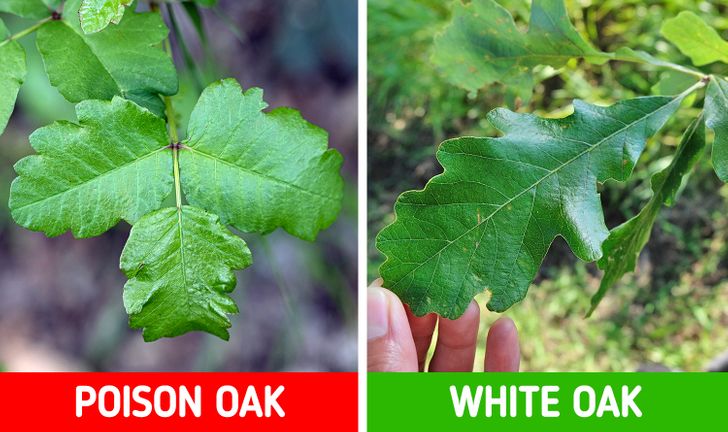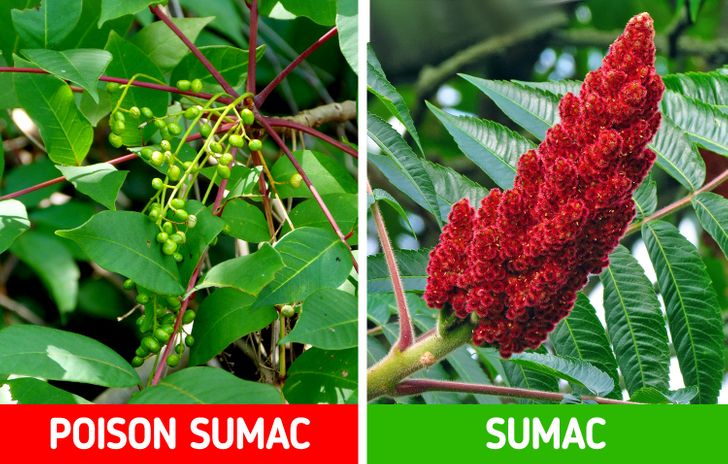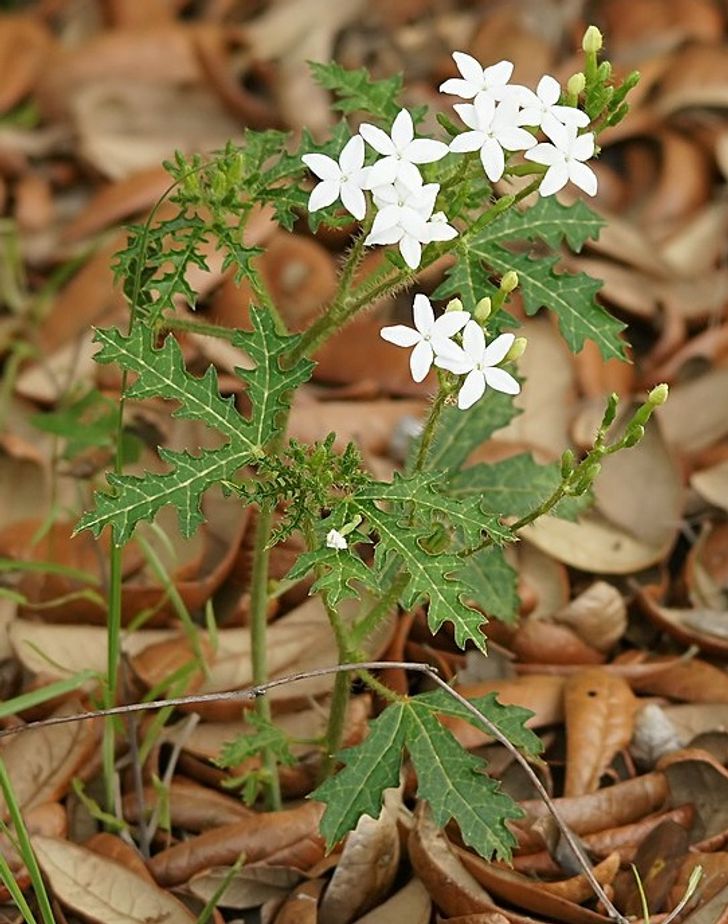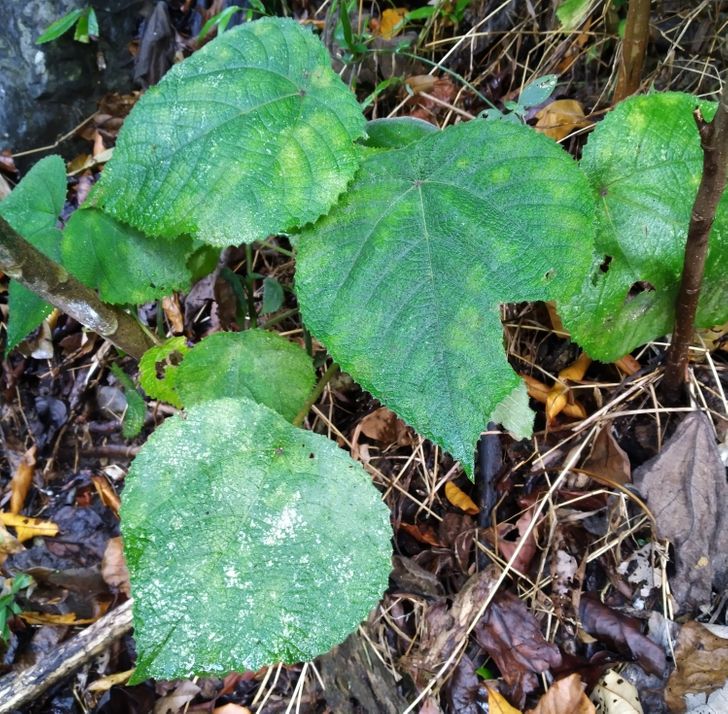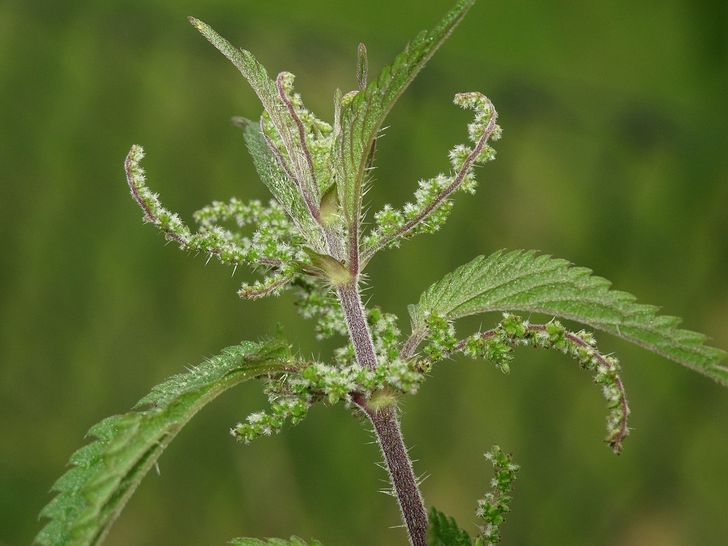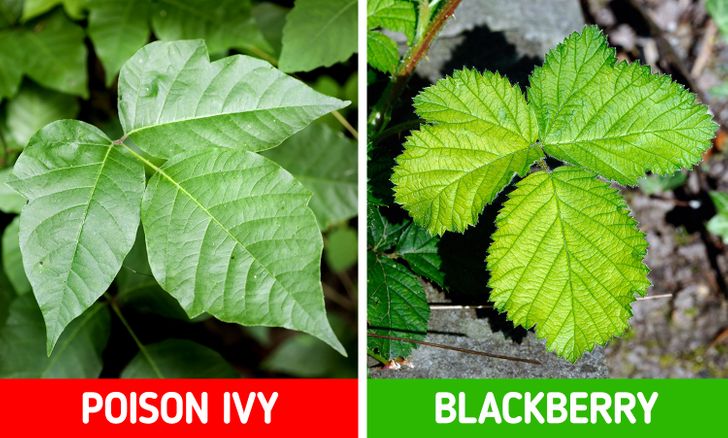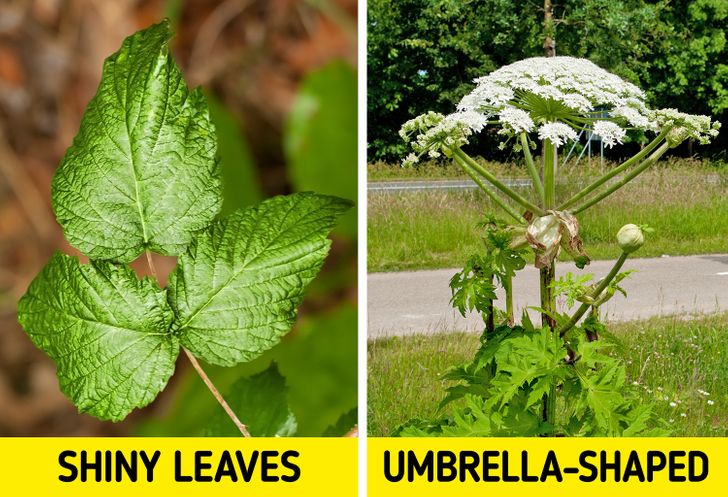only one I have ever seen is the nettle and the sting is not that bad
8 Plants That Can Be Dangerous to Touch and How to Recognize Them
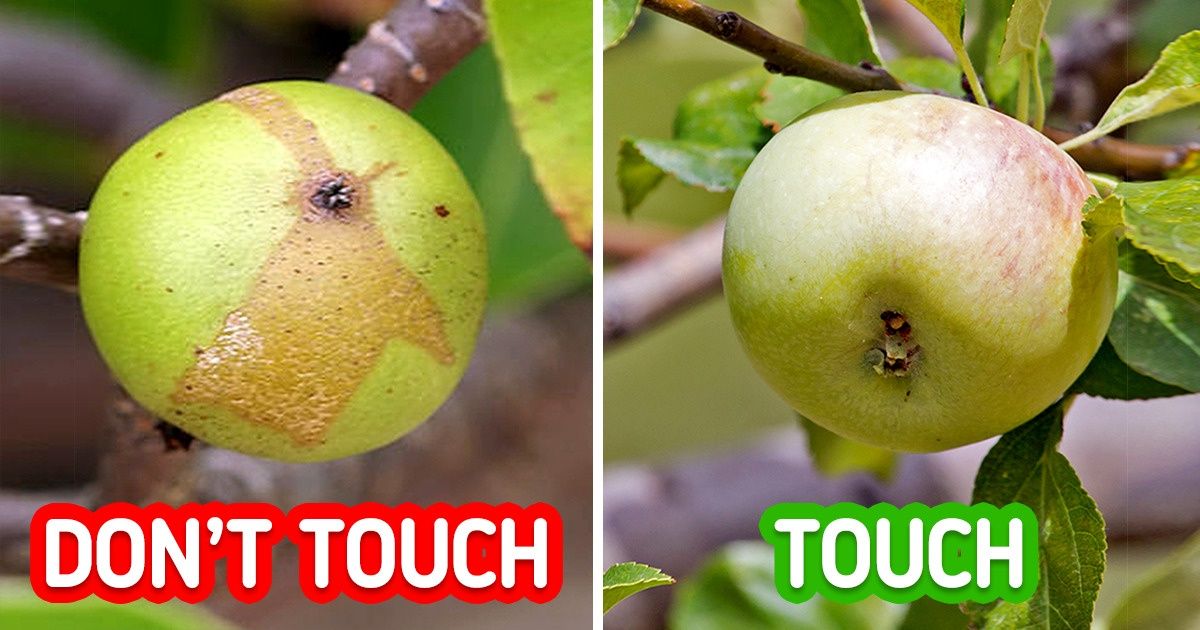
Some plants might look enticing at first sight, but not all of them are safe to touch. Sometimes, even the one you might think is a delicious berry can deceive you by being a poisonous plant that will cause a painful rash on your skin that can last for days or even months.
We at Bright Side care about our readers’ well-being, and that’s why we prepared tips on how to recognize 8 plants you should avoid touching at all times. There’s also a useful bonus at the end of the article, so don’t forget to check it out.
1. Giant hogweed
The giant hogweed has incised and deeply lobed huge leaves that can grow up to 1.5 m wide. Its stem is bright green with dark red spots surrounding the stem’s hairs. Giant hogweed’s flowers can be white or greenish-white, and the whole inflorescence resembles an umbrella.
When the sap of the giant hogweed’s leaves is touched and the skin exposed to sunlight, it can cause pain and the occurrence of severe blisters on the skin. If it comes into contact with the eyes, it can even cause blindness. The hogweed can be easily mistaken with wild carrot, which is its non-poisonous lookalike. That’s why you should be very meticulous before you decide to touch this plant.
2. Manchineel tree
Manchineel, also known as beach apple, has shiny green leaves, small greenish-yellow flowers, and reddish-greyish bark. Its fruits can be green or greenish-yellow and they look very similar to apples. All parts of the plant contain toxins and when its milky sap comes into contact with the skin, it can cause allergic contact dermatitis.
3. Poison oak
The poison oak plant contains an oily substance called urushiol, which is easily passed to other objects, humans, and animals. When coming into contact with the sap, directly through the plant or indirectly through other objects, it can cause blisters and bumps that itch.
This plant grows as a shrub and its leaves are densely haired. They are typically lobed or rounded and have a shiny surface. The poison oak’s leaves can be mistaken with the leaves of a white oak (a non-poisonous plant) — they usually grow next to each other. The leaves of both plants are very similar, but the ones of the white oak have single leaves unlike the ones of the poison oak that grow in groups of 3.
4. Poison sumac
Touching poison sumac can cause a painful rash that can last for weeks. So, to be on the safe side, you can identify it by its reddish stem and leaves that consist of 7-13 elongated leaflets in a feather-compound arrangement. In the early spring, the leaves of the poison sumac are bright orange in color. Later, they become dark green and turn red-orange in the fall.
There is also a non-poisonous sumac, and you can tell them apart by their berries. The poisonous one has clusters of green berries and the harmless one has red berries.
5. Tread-softly
Having contact with this attractive little herb can cause an intense itching and stinging sensation, and in some people, it can even cause skin discoloration that might last for days. You can identify this plant by its alternate leaves consisting of 3 to 5 untoothed lobes. It has white flowers with 5 petals, which bloom throughout the spring and summer.
6. Gympie-gympie
Large, heart-shaped leaves with wide-toothed margins is how this plant can be recognized. Also, the stem, fruits, branches, leaves, and petioles of the Gympie-gympie are all covered in stinging hairs. After touching this plant, the person will feel an instantaneous severe stinging and burning sensation which can last for several days or even months.
7. Stinging nettle
The leaves and the stem of the stinging nettle are covered in small hairs which release irritants when they are touched, causing a painful stinging sensation. Its leaves are soft and green and it bears small brownish or greenish flowers in dense axillary inflorescences.
8. Poison ivy
The leaves, stems, and roots of poison ivy produce an oily resin that causes an irritating, itchy, and painful rash that can spread throughout the whole body. Poison ivy is characterized by the way it grows — as a tall vine or a shrub, with leaves that contain 3 leaflets each. In spring, its leaves may have a red color, in summer, they are green, and in autumn they can be yellow or vibrant red.
You can sometimes find poison ivy growing among blackberries which can be one of the reasons you might accidentally come into contact with it because its leaves have a very similar shape. You can distinguish them by the thorns that grow on the blackberry’s stem, which are not present on poison ivy.
Bonus: How to identify poisonous plants by their most common features
While there is no one-size-fits-all way to detect if a plant is dangerous, there are a few common indicators that can aid in the identification of potentially hazardous plants.
- The plant has naturally shiny leaves.
- It produces a milky sap.
- The plant has yellow or white berries.
- The plant produces umbrella-shaped flowers or leaves, or the whole inflorescence resembles an umbrella.
Keep in mind that this list will not eliminate all toxic plants, but it will certainly help you avoid a large number of them.
Have you ever touched one of these plants? Do some of these plants grow in your surroundings?
Comments
💜💜💜💜💜💜
I have a feeling that I touched a couple of these poisonous plants but I'm not sure if I had any physical reaction from it
very useful info, especially for those who like walks in forests and camping, thanks!
Hope I will be able to recognize them
Related Reads
13 Companies Who Don’t Just Try to Sell Their Goods but Really Care About Their Customers

An Artist From Belgium Draws Illustrations to Prove That Women Have Nothing to Be Ashamed Of

I Absolutely Refuse to Delay My Retirement to Save My Spoiled Daughter and Her Son

My Stepdaughter Kicked My Dog Out—Now She Calls Me Heartless

I Absolutely Refuse to Tolerate My DIL’s Laziness, My Son Deserves a Wife, Not a Freeloader

15 Animal Stories That Prove Kindness Is a Language Every Living Being Speaks

18 Stories That Show Kindness Can Be the Strongest Force of All

13 Times People Accidentally Uncovered Someone’s Biggest Secret

I Refused to Let My MIL Own My Family Budget, Now My Marriage Is on Thin Ice

I Discovered My Firm Was Secretly Hiring for My Position—HR’s Response Shocked Me

My Daughter Refused to Support Me—Despite Everything I Had Given Her

14 Mother-in-Law Moments That Became a Legendary Family Story

